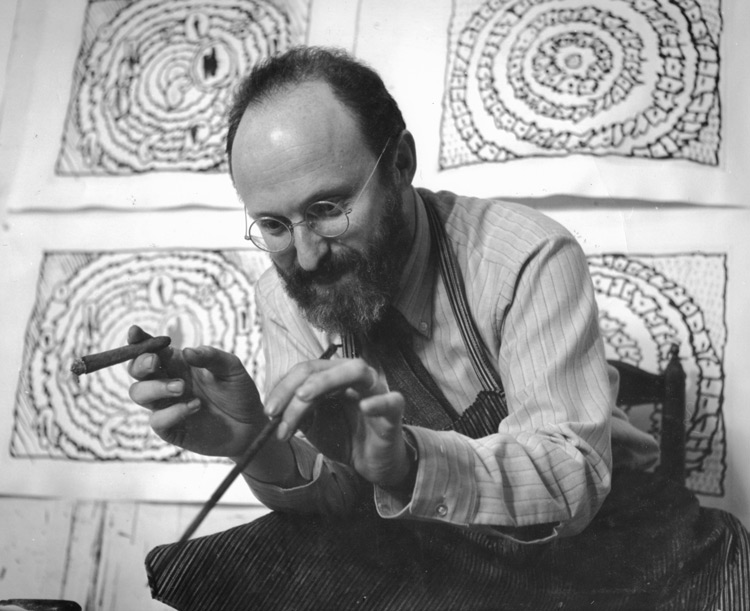
Pierre Alechinsky – the Balance of Opposites
Pierre Alechinsky (b. 1927) joined the group as a mere 22-year-old artist who had yet to formulate an idiom of his own. He was therefore probably also the artist on whom CoBrA had the greatest formal impact. Alechinsky was particularly absorbed by the thinking surrounding the joint artistic work and in the publication of the group’s most important mouthpiece – the CoBrA journal.
“These three years are exceptional for Constant, they are already customary for the great Jorn, they are catalysing for Appel and Corneille, they are exhausting for Dotremont, they are fundamental for me.”
Pierre Alechinsky
His training as a book illustrator and typographer from the Academy of Fine Arts in Brussels is very much apparent throughout Alechinsky’s oeuvre. Another consistent artistic trait is rooted in his in-depth knowledge of Eastern culture and calligraphy from his time as a correspondent for the Japanese newspaper Bukobi in Paris in the 1950s. His works are often indefinable and difficult to describe because he mixes modes of expression and lets his content be governed by different moods. He ignores established norms, and his paintings, in all their ambiguity, can thus be lyrical, calm, teasing, hectic, sarcastic and beautiful all at once. For Alechinsky, art became a balancing of opposites.
The guiding principle for Alechinsky in relation to the process of creation has always revolved around spontaneity. He wishes to reduce the distance between the sudden impulse and the action that results from it. Alechinsky’s paintings are therefore also primarily painted in acrylics due to the flexibility of the material rather than the heavier oil-based paint. Alechinsky’s art is easy to be taken with, and his ideas about the essence of art have resonated internationally. In 1983, he became a professor of art at the École Nationale Supérieure des Beaux-Arts in Paris, and 10 years later he was awarded an honorary doctorate at the Free University of Brussels. He remains active behind the canvas today and is rightly considered one of the most influential living artists in Europe. Alechinsky is also represented at the world’s biggest museums – from the Centre Pompidou in Paris to the Museum of Modern Art in New York.
